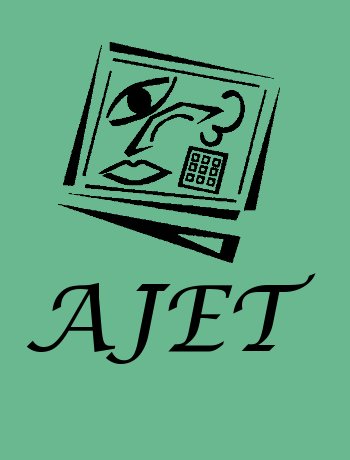
Effective online interaction: Mapping course design to bridge from research to practice
ARTICLE
Mary Thorpe
Australasian Journal of Educational Technology Volume 24, Number 1, ISSN 0814-673X Publisher: Australasian Society for Computers in Learning in Tertiary Education
Abstract
Quantitative and qualitative research of a case study course confirmed that the course achieved a highly interactive learning experience, associated with more effective student support and high student retention. Computer conferencing achieved high participation from the beginning and evidence of dialogue and argumentation within online tutor groups. This was achieved not by active tutor moderation but by a sequence of structured tasks. Compendium mind mapping software has been used to represent the design of this sequence of tasks and this has refined interpretation of the research findings. The positive outcomes identified relate not purely to computer conferencing but to an integration of individual and group tasks feeding forward into a well-designed assignment. The usability of case study data relates to the ability of practitioners to compare their own context with that of the case. The visual representation of the design of the task sequence is providing a better bridge from the research to the practice context than the use of general description of findings alone. This is particularly important in an area which has generated a range of sometimes conflicting findings, with weak links to the challenges of course design.
Citation
Thorpe, M. & Thorpe, M. (2008). Effective online interaction: Mapping course design to bridge from research to practice. Australasian Journal of Educational Technology, 24(1),. Australasian Society for Computers in Learning in Tertiary Education. Retrieved August 13, 2024 from https://www.learntechlib.org/p/44458/.
References
View References & Citations Map- Agostinho, S. (2006). The use of a visual learning design representation to document and communicate teaching ideas. In Who’s learning? Whose technology? Proceedings ASCILITE Conference. The University of Sydney. Http://www.ascilite.org.au/conferences/sydney06/proceeding/pdf_papers/p173.pdf
- Bannan-Ritland, B. (2002). Computer-mediated communication, elearning and interactivity: A review of the research. Quarterly Review of Distance Education, 3(2), 161-179.
- Conole, G. & Fill, K. (2005). A learning design toolkit to create pedagogically effective learning activities. Journal of Interactive Media in Education, 2005/08. [viewed 15 Nov 2007] http://www-jime.open.ac.uk/2005/08/
- Conole, G., Thorpe, M., Weller, M., Wilson, P., Nixon, S. & Grace, P.(2007). Capturing practice and scaffolding learning design. Paper presented at the EDEN annual conference 2007 New Learning 2.0? Naples, June 2007. ESRC (Economic& Social Research Council) (2002). Working towards e-quality in networked elearning in higher education: A manifesto statement for debate. Report of UK ESCR Seminar Series. [viewed 21 July 2006, verified 16 Jan 2008] http://www.csalt.lancs.ac.uk/esrc/manifesto.pdf
- Goodyear, P., Banks, S., Hodgson, V. & McConnell, D. (2004). Research on networked learning: Aims and approaches. In P. Goodyear, S. Banks, V. Hodgson& D. McConnell (Eds), Advances in research on networked learning. Dordrecht: Kluwer Academic Publishers.
- Goodyear, P. (2005). Educational design and networked learning: Patterns, pattern languages and design practice. Australasian Journal of Educational Technology, 21(1), 82-101.
- Kirkwood, A. & Price, L. (2005). Learners and learning in the twenty-first century: What do we know about students’ attitudes towards and experiences of information and communication technologies that will help us design courses? Studies in Higher Education, 30 (3), 257-274.
- Littleton, K. & Hakkinen, P. (1999). Learning together: Understanding the processes of computer-based collaborative learning. In P. Dillenbourg (Ed), Collaborative learning: Cognitive and computational approaches. Oxford: Elsevier.
- Maor, D. & Volet, S. (2007). Interactivity in professional online learning: A review of research based studies. Australasian Journal of Educational Technology, 23(2), 269-290.
- Moore, M.G. (1989). Editorial: Three types of interaction. The American Journal of Distance Education, 3(2), 1-6.
- The Open University (2006). The Environmental Web, Course Welcome. [viewed 21 July 2006; login required] http://students.open.ac.uk/u316/course/welcome.cfm
- Ramsden, P. (1991). A performance indicator of teaching quality in higher education: The Course Experience Questionnaire. Studies in Higher Education, 16, 129-150.
- Reeves, T. (2000). Enhancing the worth of instructional technology research through “design experiments” and other development research strategies. Paper presented at ‘International Perspectives on Instructional Technology Research for the 21st Century’, a Symposium sponsored by SIG/Instructional Technology at the Annual Meeting of AERA, New Orleans, LA, USA. [verified 26 Dec 2007] http://it.coe.uga.edu/~treeves/AERA2000Reeves.pdf
- Rourke, L., Anderson, T. & Garrison, R. (2001). Assessing social presence in asynchronous textbased computer conferencing. Journal of Distance Education, 14(2), 1-16.
- Salmon, G. (2000). E-moderating: The key to teaching and learning online. London: Kogan Page.
- Strauss, A.L. (1987). Qualitative analysis for social scientists. Cambridge: Cambridge University Press.
- Thorpe, M. & Godwin, S. (2006). Interaction and e-learning: The student experience. Studies in Continuing Education, 28(3), 203-221.
- Wu, D. & Hiltz, S.R. (2004). Predicting learning from asynchronous online discussions. Journal of Asynchronous Learning Networks, 8(2), 139-152.
These references have been extracted automatically and may have some errors. Signed in users can suggest corrections to these mistakes.
Suggest Corrections to ReferencesCited By
View References & Citations Map-
Key elements of the tutorial support management model
Grace Lynch, Philip Paasuke & Philip Paasuke
Australasian Journal of Educational Technology Vol. 27, No. 1 (Jan 01, 2011)
These links are based on references which have been extracted automatically and may have some errors. If you see a mistake, please contact info@learntechlib.org.
